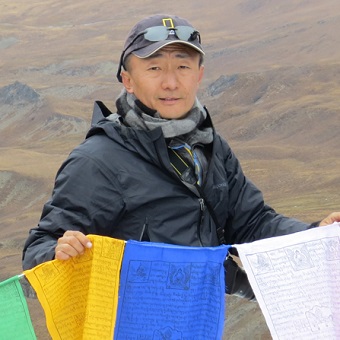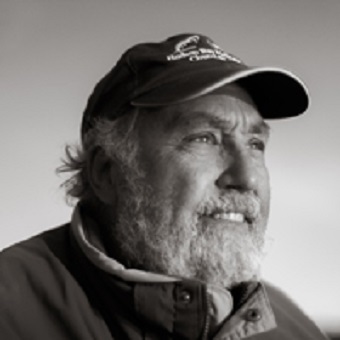
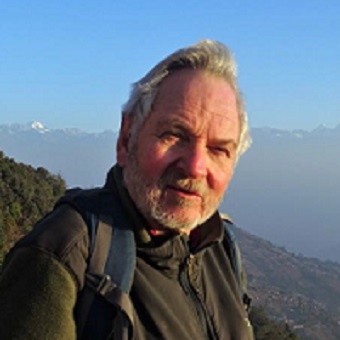
Rodney Jackson, PhD, Founder/President
Dr. Rodney Jackson is the leading expert on wild snow leopards and their high-mountain habitat. SLC has grown out of Rodney’s forty years’ experience gained in working closely with rural herders and farmers whose lives are directly impacted when snow leopards prey upon their livestock. Upon receiving a 1981 Rolex Award for Enterprise, Rodney launched a pioneering radio-tracking study of snow leopards in the remote mountains of the Nepalese Himalaya. The four-year study led to the cover story in the June 1986 National Geographic. In addition, the June, 2008 issue of National Geographic featured Rodney’s work with the Snow Leopard Conservancy India.
Read more about Dr. Jackson
He has been a finalist for the Indianapolis Prize in 2008, 2010, 2012, 2016, and 2018 – the first to be nominated three times consecutively. The Indianapolis Prize is the world’s largest individual monetary award for animal conservation.
Rodney prepared the snow leopard section of the IUCN-World Conservation Union’s Status Survey and Conservation Action Plan for Cats, which serves as a definitive document on the needs and opportunities for preservation of the earth’s remaining wild cats. He currently sits on the IUCN’s Cat Specialist Core Group and served from 2003 until 2008 on the Snow Leopard Network Steering Committee. Rodney led the standardization of snow leopard field survey methods across the twelve snow leopard host countries, the Snow Leopard Information Management System (SLIMS). Working with partner agencies, he trained biologists in these methods in nature reserves in China, Pakistan, Mongolia, Nepal, Bhutan, and India. SLIMS has since been superseded by advancements in technology for surveying snow leopard populations. Rodney’s publications include a comprehensive handbook on surveying snow leopard populations using camera traps published in 2006. You will find it on our site. The document represents the detailed results of over four years of systematic field research conducted in the harsh geographical and climatic conditions of the Himalaya and other parts of Central Asia. The handbook has been translated into Chinese and Russian. In addition, Rodney co-authored two papers on genetics; one published in Animal Conservation in October 2008, and another published in the Journal of Mammalogy in August 2011. Rodney has written or co-written chapters in books including “Snow Leopards: Conflict and Conservation,” in Biology and Conservation of Wild Felids (Professor D. Macdonald and A. Loveridge, editors), Oxford University Press, UK, 2010; “Snow leopards: is reintroduction the best option?” in The Reintroduction of Top-Order Predators, M. W. Hayward, and M. J. Somers, editors. Wiley-Blackwell, Oxford, UK, 2009; and “Ghost Cat of the Himals”, in: Himalaya: Personal Stories of Grandeur, Challenge and Hope. Edited by R.C. Blum, E. Stone and B. Coburn. National Geographic Society and American Himalayan Foundation. Washington DC, 2006. Rodney also wrote the section on snow leopards and clouded leopards for the New Encyclopedia of Mammals, published by Oxford University Press, 2001; the Proceedings of the 8th International Snow Leopard Symposium, co-edited with A. Ahmad and published in 1997 by the International Snow Leopard Trust, Seattle and WWF-Pakistan; “Cats Up Close: Snow Leopards”, in Great Cats: Majestic Creatures of the Wild, Rodale Press, 1991; and popular articles for International Wildlife, Animal Kingdom, and Geo (France and Germany).
Show Less
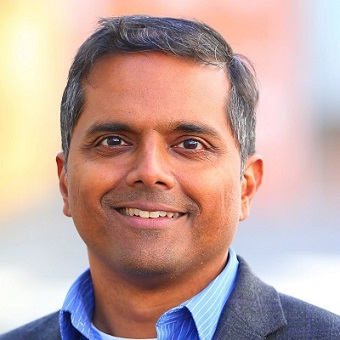
Raja Bhadury, Vice-President
Raja Bhadury has worked for over twenty years developing and commercializing mobile computing solutions. He is currently with HP Inc. where he manages cloud-hosted desktop initiatives. Before this, he managed a portfolio of HP solutions used by healthcare delivery organizations worldwide to enhance patient care.
Since childhood, Raja has enjoyed the outdoors and visited national parks across India, Africa, and North America. He has witnessed firsthand the devastating impact of climate change but also has seen how enlightened communities and businesses are meeting the challenge in creative ways. He will be supporting the Conservancy’s conservation initiatives by drawing from his experience as a technologist leading global (and increasingly virtual) teams.
He resides in Northern California and has degrees from Harvard College and the Wharton School of the University of Pennsylvania.
Bob Wilson, Chief Financial Officer/Treasurer (2010-2023)
Bob Wilson was active in a number of environmental organizations. He was the former Chair of the Greater Farallones Association (formerly FMSA) board and was the Conservancy’s CFO and Treasurer. He was an active Beachwatch and SEALS volunteer. He served as the executive director of GFA. He was on the Sanctuary Advisory Council for the Greater Farallones National Marine Sanctuary. He was CEO of Sanctuary Supporters LLC. Bob was also on the Board of Directors of the American Cetacean Society (SF chapter). He was director emeritus of The Marine Mammal Center and was policy liaison for TMMC. He was also a stranding and animal care volunteer. Bob was a founder and former Board Chair of Polar Bears International (US) and was Vice Chair of PBI (Canada). Bob was an advisor to organizations such as the Desert Tortoise Preservation Committee and Earthshare California. He was an attorney and retired from the Federal government.
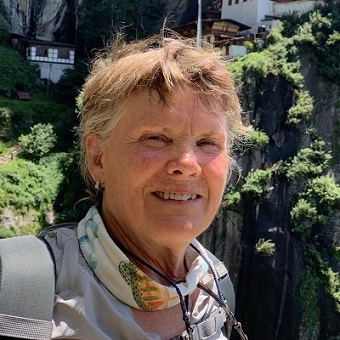
Carolyn MacKenzie, Secretary
Carolyn MacKenzie joined the Conservancy’s Board of Directors on April 16, 2020. Carolyn always wanted to be a wildlife biologist. At age 20 she backpacked across Africa, India and the Middle East. She received her Master of Science degree in biophysics and a Bachelor of Science in zoology, both from the University of California, Davis. Along the way, her direction changed. She recently retired after a distinguished 40-year career in the field of Health Physics.
Carolyn’s broad experience includes the development of a computer-based international radiation safety training course for onsite test ban treaty inspectors, securing and disposing of dangerous radioactive sources for the University of California, systemwide and for Lawrence Livermore National Laboratory in global source security.
Read more about Carolyn MacKenzie
As an International Radiation Source Specialist with the International Atomic Energy Agency (IAEA), Vienna, Austria, Carolyn led missions to 35 United Nations member countries to establish national strategies for the control of sealed radioactive sources. She participated in Technical Cooperation programs with Eastern European countries, China and Iraq addressing radioactive source location and recovery. She managed workshops and projects for source recovery in 10 African countries, and was technical lead on international standards development in the field of health physics. This work led to a 2005 Nobel Peace Prize shared by IAEA’s Director General and the approximately 2000 IAEA staff.
Carolyn is also the President of the Interfaith Council of Contra Costa County, promoting peaceful dialogue and understanding among the world’s faith religions. This work is relevant to the Conservancy’s Land of Snow Leopard Network, and we look forward to having her council and guidance as the Network grows.
Show Less
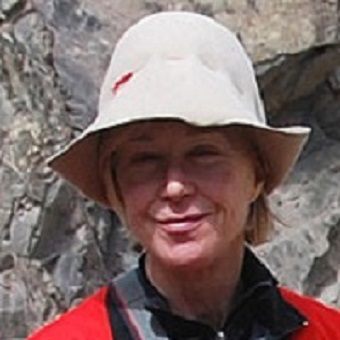
Caroline Gabel, Trustee
Caroline Gabel lives in Maryland, where she directs the Shared Earth Foundation, which supports endangered species and their habitats. Caroline is also active on the boards of Defenders of Wildlife and Rachel’s Network. She served as a Congressional staffer on the House Committee on Public Works and Transportation from 1970 to 1999. There she helped establish legislation to, among other things: protect and restore the backwaters and sloughs of the Upper Mississippi; protect and enhance water quality in the Great Lakes; improve aviation safety and security, channel highway money into bicycle and hiking trails, and historic preservation. Caroline is a licensed pilot, accomplished equestrian, and avid traveler. She saw a snow leopard during the 2007 Winter Quest for the Snow Leopard.
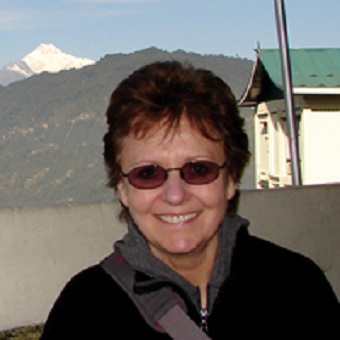
Mary Herrmann, Trustee
Mary Herrmann grew up in Minnesota, graduating from the University of Minnesota with a degree in Medical Technology. She served as a teacher in the Peace Corps in Liberia from 1969 to 1971. After returning, she specialized in microbiology, and joined Virolab in Berkeley, CA, for 21 years, working in virology and immunology. Her work involved collaboration with leading research scientists on numerous ground-breaking epidemiological studies, including HIV-AIDS, Lyme disease, and Epstein-Barr virus. Mary has traveled extensively, including trekking in the snow leopard’s habitat in northern India.
